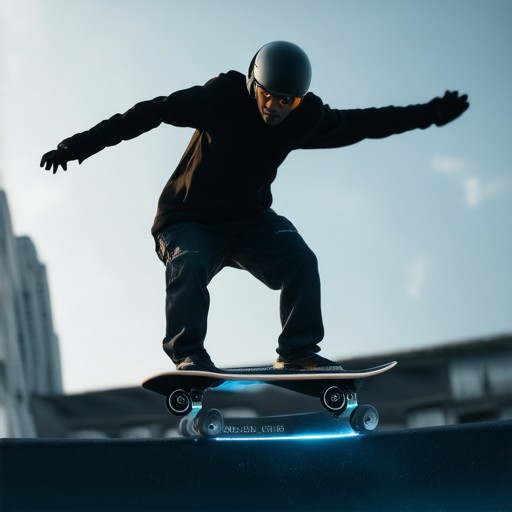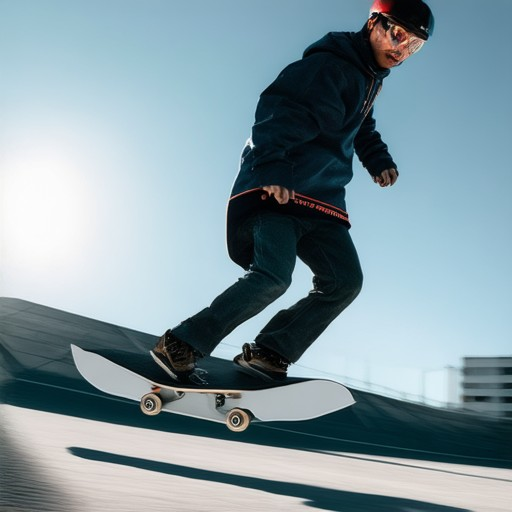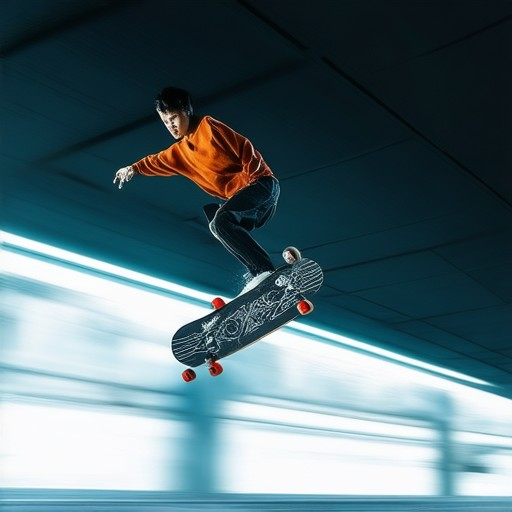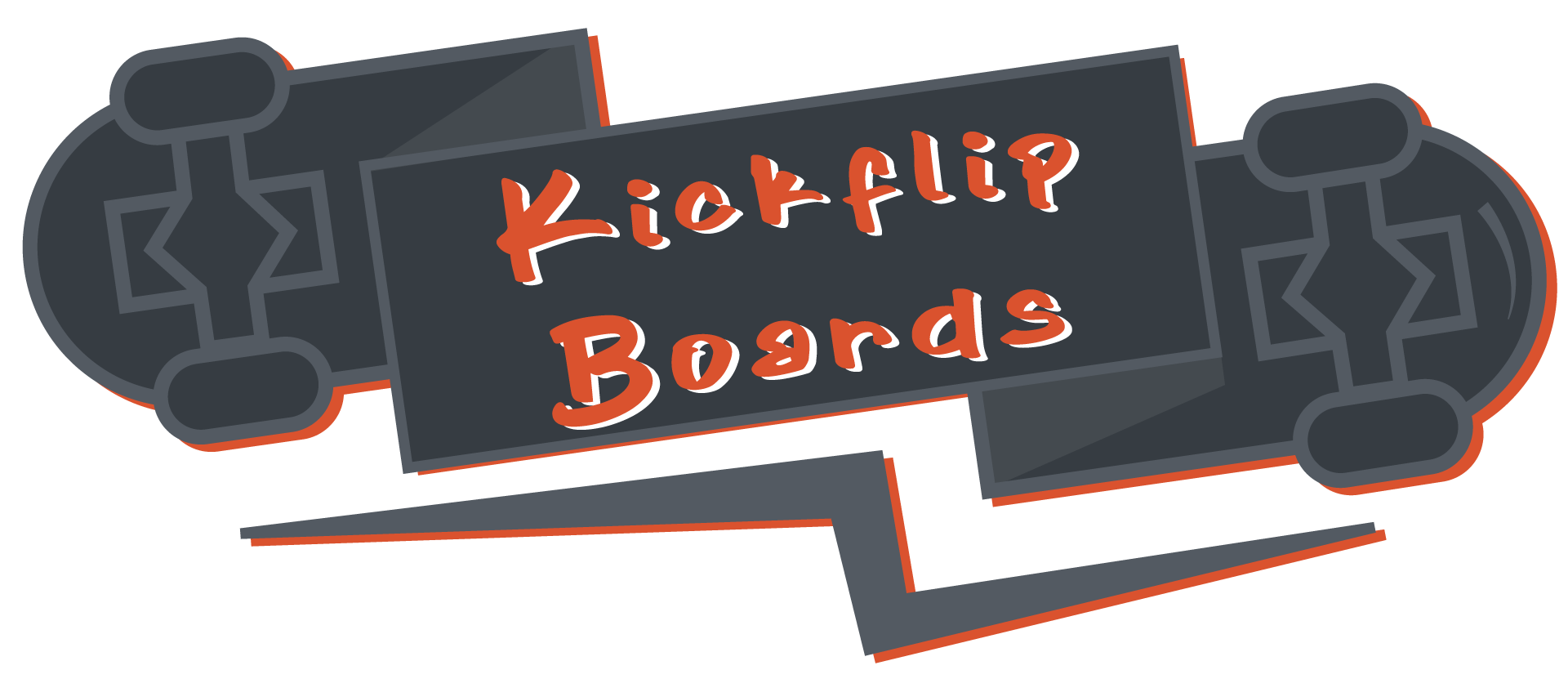Choosing the perfect skateboard deck size can feel like navigating a maze of options, especially when you’re new to skating. Whether you’re a casual rider or a serious skateboarder, understanding the right fit for your style and body type is crucial for comfort and performance. Skateboard deck sizes vary widely, ranging from smaller sizes ideal for kids to larger boards designed for experienced riders and various disciplines like street skating or vert. In this comprehensive guide, we’ll break down everything you need to know about skateboard deck sizes, helping you determine the perfect size for your needs. From understanding how to measure your feet and assessing your riding style to exploring the differences between standard sizes and specialty boards, this guide will walk you through the process of finding the ideal skateboard deck size. With clear explanations and practical advice, you’ll be equipped to make an informed decision that enhances your skating experience. Let’s dive in and uncover the secrets to choosing the perfect skateboard deck size!

How to Determine the Right Skateboard Deck Size
Your skateboard deck size is crucial for comfort and performance. Here’s a step-by-step guide to finding the perfect size:
- Check Your Shoe Size: Measure your shoe size. If you wear men’s size 6.5 to 9, start with a 7.5 to 8.0-inch deck. For sizes 9.5 and above, opt for 8.0 to 8.5 inches.
- Consider Foot Shape and Riding Style: If you have wider feet or prefer a smoother ride, a slightly wider deck may be better. Bulkier shoes might also benefit from a wider deck.
- Refer to a Size Chart: Use a reliable size chart to match your shoe size to the appropriate deck width. These charts often provide general guidelines based on typical foot dimensions.
- Try Before You Buy: Visit a local skate shop to try the board. This ensures the best fit and comfort for your riding style.
- Understand Wheelbase and Stability: While deck width impacts stability, the wheelbase length (distance between wheels) also affects ride characteristics. Longer wheelbases offer more stability, while shorter ones provide agility.
Note: Personal preference varies, so always test the board in different conditions to ensure it suits your needs.
Is a 7.5″ Deck Too Small?
The question of whether a 7.5-inch skateboard deck is too small often comes down to personal preference, riding style, and skill level rather than the size alone. Here’s a breakdown:
- Narrower Boards : At 7.5 inches wide, the deck is relatively narrow, which can make it less stable and potentially harder to land tricks due to reduced wheelbase.
- Portability and Weight : A 7.5″ deck is lightweight, making it easier to carry and maneuver, which is great for kids or casual riders.
- Skill Level and Experience : Novice riders or those with a smaller build may find a 7.5″ deck suitable, while more experienced or heavier riders might prefer a larger size for better stability and control.
- Riding Context : For activities like cruising or street skating, a 7.5″ deck can perform adequately. However, for more aggressive tricks or downhill racing, a wider deck might be preferable.
Ultimately, the suitability of a 7.5″ deck depends on individual needs and riding conditions. It’s a common size for entry-level riders and younger skaters, offering a good balance between portability and performance.

Is an 8.25 skateboard too big?
The 8.25-inch skateboard deck size is generally considered a good fit for many riders. Here’s a breakdown of why:
- Deck Size Range : Skateboard sizes typically range from 7.5″ to 9″. An 8.25″ board falls comfortably within this range, making it a versatile option.
- Riding Style Consideration :
- Street Skating : Suitable for smooth surfaces and everyday use.
- Transition Areas : Good for parks, pools, and other transition spots due to its width.
- Bigger Tricks : Offers stability for more demanding tricks and jumps.
- ** Rider Fit**:
- Skill Level : A good choice for intermediate to advanced riders looking for a balance between control and responsiveness.
- Body Size : Provides enough clearance for taller riders while maintaining stability.
- Common Usage : Often preferred by those seeking a middle ground between maneuverability and comfort, making it ideal for a variety of skating styles.
In conclusion, an 8.25-inch skateboard is not too big. It offers a good balance for most riders, combining comfort and performance for both casual and technical skating sessions.

What Size Board Should I Get if I’m 5’3″?
For someone who is 5’3″, a standard skateboard deck size of 8″ or 8.25″ is often recommended. These sizes provide a good balance between maneuverability and stability, making them suitable for a variety of riding styles. However, your personal preference and the type of skating you plan to do will greatly influence your decision.
Considerations:- Narrower Decks (7.5″) : Ideal for technical tricks but may feel restrictive for larger riders.- Standard Decks (8″-8.25″) : Versatile options that are comfortable for many riders and offer good control.- Wider Decks (8.5″-9″) : Better for stability and speed, ideal for longer rides or street skating.
Your shoe size can also guide your choice. A US women’s size 7.5 corresponds roughly to a men’s size 6.5. Many skaters find that matching their shoe size to the deck size offers a comfortable fit.
Testing different sizes in person is advisable to determine the best fit for your riding style. Consider visiting local skateboard shops to try out boards and seek advice from knowledgeable staff. Additionally, review prices and durability ratings to make an informed purchase decision.
Recommended Brands and Setup:
- Brands to Explore : Check out reputable brands like Element, which offers a range of sizes and setups tailored for various skill levels.
- Setup Consideration : For a narrower deck, wider trucks may enhance stability. Experiment with different truck widths to find the optimal setup for your deck size.
By evaluating these factors and testing the boards firsthand, you can select the perfect size and configuration to enhance your skating experience.
Is a 7.75 Skateboard Size Suitable for Beginners?
A 7.75-inch skateboard can be a good size for certain beginners, particularly those who are lighter in weight and have smaller foot sizes. Here’s why:
- Wheelbase Length : The 7.75-inch wheelbase provides a responsive feel, making it easier to maneuver and perform tricks, which is beneficial for learners.
- Flexibility and Deck Height : This size typically offers a good balance of flexibility and durability, allowing for smooth landings and better shock absorption, which is crucial for mastering tricks.
- Concave Shape : Many 7.75-inch boards feature a mild concave shape, aiding in turn initiation and trick popping, which can enhance the learning process.
- Nose and Tail Shape : Rounded shapes in the nose and tail can provide better control during manual moves and grinds, making it easier for beginners to handle.
However, it’s important to consider personal fit and riding style. Heavier riders or those with larger feet may find a 7.75-inch board too small and may prefer a slightly larger size for better stability. Additionally, the width of the board can impact control, with narrower widths potentially feeling more manageable for smaller feet.
Ultimately, the suitability of a 7.75-inch skateboard depends on individual factors such as weight, foot size, and riding style. For many lighter, smaller-footed riders, it can be a great option for learning the ropes in street skating or park sessions.

What Size Should I Wear if I’m 5’3″?
To determine the appropriate shoe size for your 5’3″ height, consider the following steps:
- Understand Shoe Size Charts : Most shoe brands follow standardized size charts, typically categorized as US, UK, EU, and Japan. These charts define the foot length and width for each size.
- Measure Your Foot : Use a ruler to measure the longest part of your foot (usually the heel) and note the width and arch height. This helps in choosing the right size.
- Consider Foot Shape : Assess if your foot is medium or wide. Some brands offer wide sizes, which may be necessary for better fit.
- Check Toe Room : Ensure the shoe offers adequate space for your toes to move freely.
- Try On Shoes : Visit a store or use virtual try-on tools to test the fit, checking for comfort and avoiding rubbing or slipping.
- Review Customer Reviews : Look at feedback from customers with similar foot measurements to gauge real-world comfort.
- Account for Shoe Type : Consider the design of the shoe—sneakers vs. heels or sandals—since fit can vary based on style.
- Cross-Reference Brands : Check multiple shoe size charts as different brands may scale sizes differently.
By following these steps, you can find the optimal shoe size that ensures comfort and fit for your 5’3″ frame.




0 Comments